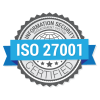Technology spend is considered among the most complex and significant areas of expenditure in any organization. Given its intricacies, managing and optimizing this spend necessitates more than just periodic oversight. Regular internal audits of technology spend can play a crucial role in maintaining financial health, identifying cost-saving opportunities, and fostering stronger supplier relationships.
In this article, we will explore the benefits of consistently reviewing technology products and services throughout the financial year, as opposed to relying solely on eventual checks by external auditors.
The Complex Beast that is Technology Spend
Technology spend encompasses a wide range of categories, from software licenses, hardware purchases and cloud services, to telecom, professional services, and IT support. Each of these areas involves detailed contracts, varying pricing models, and frequently changing terms and conditions.
According to Gartner, global IT spending has reached $4.5 trillion in 2023. This highlights the significant financial commitment organizations make towards technology. Such a substantial investment underscores the need for meticulous management and regular audits to avoid financial pitfalls and clear visibility of spend.
The Case for Regular Internal Audits
So, what kind of benefits can we accumulate when regularly auditing your spend? Below we name a few:Proactive Issue Resolution
Regular internal audits allow organizations to identify and resolve issues promptly. By consistently reviewing invoices and contracts, companies can catch discrepancies such as overcharges or incorrect billing early. This proactive approach prevents small errors from accumulating into significant financial losses and reduces the time spent on disputes with suppliers.
Cost Avoidance
Regular audits help in avoiding unnecessary costs. By keeping a close eye on expenditures, organizations can ensure they are only paying for what they use. This includes identifying unused or underutilized services that can be renegotiated or terminated. A study by the Aberdeen Group found that companies that frequently review their technology spend can reduce costs by up to 20%.
Stronger Supplier Relationships
Maintaining healthy and civil relationships with suppliers is crucial for long-term success. Regular audits demonstrate to suppliers that the organization is diligent and attentive to its expenditures. This transparency fosters trust and can lead to better negotiation outcomes and more favorable contract terms. According to a survey by Deloitte, 57% of organizations reported improved supplier relationships as a direct benefit of regular spend audits.
Optimization Opportunities
Regular audits provide continuous insights into spending patterns and contractual terms, uncovering opportunities for optimization. Organizations can identify trends and areas where they can negotiate better deals or seek alternative solutions. This continuous improvement approach ensures sustained cost savings and improved efficiency over time.
Sustained Results
Consistent audits help in securing and sustaining cost-saving results. Unlike annual reviews that might result in short-term fixes, regular audits ensure that optimizations are continuously monitored and maintained. This ongoing process helps in adapting to changes in the technology landscape and organizational needs.
Implementing Effective Internal Audits
To maximize the benefits of regular internal audits, organizations should consider the following strategies:
Leverage Technology: Utilize advanced analytics and auditing tools to automate the review process. These tools can quickly identify anomalies and provide detailed reports, making the audit process more efficient and accurate.
Train Procurement Teams: Invest in training procurement teams to understand the nuances of technology contracts and billing. This knowledge enables them to conduct thorough audits and negotiate better terms.
Establish Clear Procedures: Develop clear procedures and guidelines for conducting regular audits. This includes setting audit frequency, defining key areas of focus, and outlining the steps for resolving identified issues.
Collaborate with IT and Finance: Foster collaboration between procurement, IT, and finance teams. This cross-functional approach ensures a comprehensive understanding of technology needs and spending, leading to more effective audits.
Key Takeaways
Due to its complex nature and significance percentage of spend on most organization’s budgets, regularly auditing technology spend is a safe call to optimize financial performance and operational efficiency of your business.
By proactively identifying and rectifying billing errors, organizations can prevent unnecessary costs and maintain robust financial health. This practice also fosters transparency and trust with suppliers, leading to improved negotiation outcomes and stronger, more collaborative relationships.
Consistent audits reveal hidden inefficiencies and areas for improvement, enabling continuous optimization of technology investments and operational processes. Moreover, the ongoing insights gained from regular audits help organizations adapt to the ever-changing technology landscape and market conditions, ensuring they remain agile and competitive.
Integrating regular internal audits into procurement strategies allows organizations to achieve sustained cost savings, avoid overcharges, and unlock significant value, driving long-term success and efficiency to their business.


